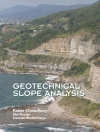In the face of increasing failures, comments attributed to Albert Einstein loom large: “We cannot solve our problems with the same thinking we used when we created them.” There is a pervasive feeling that any attempt to make sense of the current terrain of complex systems must involve thinking outside the box and originating unconventional approaches that integrate organizational, managerial, social, political, cultural, and human aspects and their interactions.
This textbook offers research-based models and tools for diagnosing and predicting the behavior of complex techno-socio-economic systems in the domain of critical infrastructures, key resources, key assets and the open bazaar of space, undersea, and below-ground systems. These models exemplify emblematic models in physics, within which the critical infrastructures, as well as society itself and its paraphernalia, share the profile of many-body systems featuring cooperative phenomena and phase transitions – the latter usually felt as disruptive occurrences.
The book and its models focus on the analytics of real-life-business actors, including policy-makers, financiers and insurers, industry managers, and emergency responders.
Table of Content
Chapter 1. Critical Infrastructures, Key Resources, Key Assets.- Chapter 2. Governance Vulnerability Facets.- Chapter 3. A Physical Analogy for Resilience and Vulnerability.- Chapter 4. System of Systems Governance.- Chapter 5. Use of Cellular Automata in Assessment of Risk and Vulnerability.- Chapter 6. Nuclear Reactors Vulnerability Assessment – A Generic Model.- Chapter 7. Emerging Space Treats and Satellites.- Chapter 8. Managerial Vulnerability Assessment Models.- Chapter 9. Airborne Emissions and Territorial Vulnerability Assessment.- Chapter 10. System Resilience Governance.- Chapter 11. Dynamic Capability Model.- Chapter 12. Processing Switzerland.- Chapter 13. Vulnerability Analysis and Swiss Reduction – Building a Framework for Ranking Solutions.- Chapter 14. The Case for Sihl Dam.- Chapter 15. Urban Area Vulnerability Assessment: Cellular Automation Approach to Airflow Dispersion in Complex Terrains.- Chapter 16. Vulnerability of a Regional Economy in a Global Competition.- Chapter 17. The Postface – Towards Space, Belowground and Undersea Governance.- Appendices.
About the author
Adrian V. Gheorghe is a professor of Engineering Management and Systems Engineering and the Batten Endowed Chair in System of Systems Engineering at the Department of Engineering Management and Systems Engineering at Old Dominion University (Norfolk, Virginia, USA). He holds an M.Sc. in Electrical Engineering from the Faculty of Power Engineering, Bucharest Polytechnic Institute (Bucharest, Romania), an MBA from Academy of Economic Studies (Bucharest, Romania), an M.Sc. in Engineering Economics from Bucharest Polytechnic Institute, (Bucharest, Romania) and a Ph.D. in Systems Science/Systems Engineering from City University (London, U.K.) He is an editor for several international scientific journals and a member of numerous scientific boards. He has published several books, including ‘Emergency Planning Knowledge’ (Vd F Verlag, 1996), ‘Critical infrastructures at risk: Securing the European electric power system’ (Springer, 2006), and ‘Critical infrastructures: Risk and vulnerability assessment in transportation of dangerous goods – Transportation by road and rail’ (Springer, 2016).
Dan V. Vamanu is a senior researcher at Horia Hulubei National Institute of Physics and Nuclear Engineering (Bucharest, Romania). He holds a Ph.D. in Theoretical Physics (1978). He originally worked in the field of quantum theory of solids, publishing on elementary excitations – phonons and magnons in thin films and impure crystals. He co-authored a review on thin magnetic films in the American Encyclopedia Solid State Physics (vol. 27, Academic Press), and the book– ‘Emergency Planning Knowledge’ (Vd F Verlag, 1996), ‘Integrated Risk and Vulnerability Management Assisted by Decision Support Systems: Relevance and Impact on Governance’ (Springer, 2005) and ‘Critical Infrastructures at Risk: Securing the European Electric Power System’ (Springer, 2006).
Polinpapilinho F. Katina is currently a postdoctoral researcher at the National Centers for System of Systems Engineering and an adjunct assistant professor at the Department of Engineering Management and Systems Engineering at Old Dominion University (Norfolk, Virginia, USA). He holds a B.Sc. in Engineering Technology, an M.Eng. in Systems Engineering and a Ph.D. in Engineering Management/Systems Engineering from the same university. He received additional training at Politecnico di Milano (Milan, Italy). He is a guest editor and has written more than 60 scholarly publications, as well as two books: ‘Infranomics: Sustainability, Engineering Design and Governance’ (Springer, 2014) and ‘Critical Infrastructures: Risk and Vulnerability Assessment in Transportation of Dangerous Goods – Transportation by Road and Rail’ (Springer, 2016).
Roland Pulfer is the founder and strategy officer of Action4Value Gmb H (Kirchseelte, Germany). He holds a Ph.D. in Industrial Engineering and is active in various roles for innovative software companies in the areas of enterprise digitization, holistic search technology, cyber defence, and conformance monitoring. Dr. Pulfer is a member of the Technical Supervisory Board for Old Dominion University (Norfolk, Virginia, USA). His book publications include: Business (re-) engineering: Best Practices: The Top Ease TM Approach (2001) and Control Your Business: The Balance between Principles and Pragmatism (2006). He holds several patents in Switzerland and the USA.












